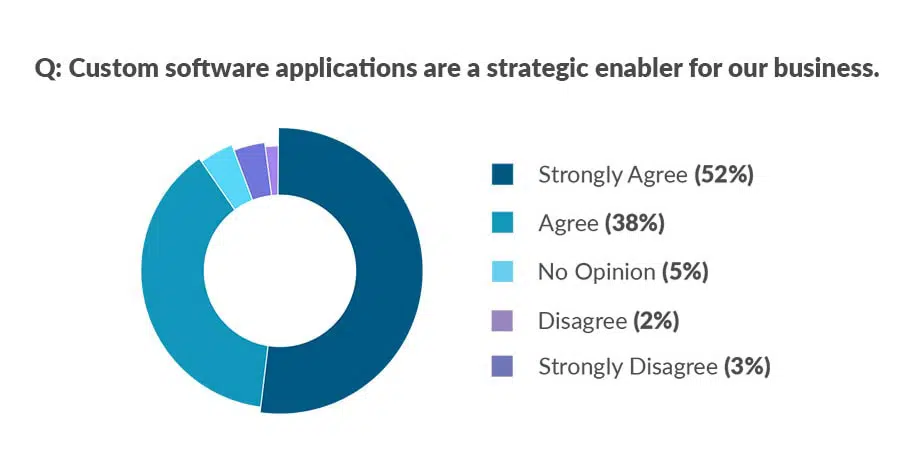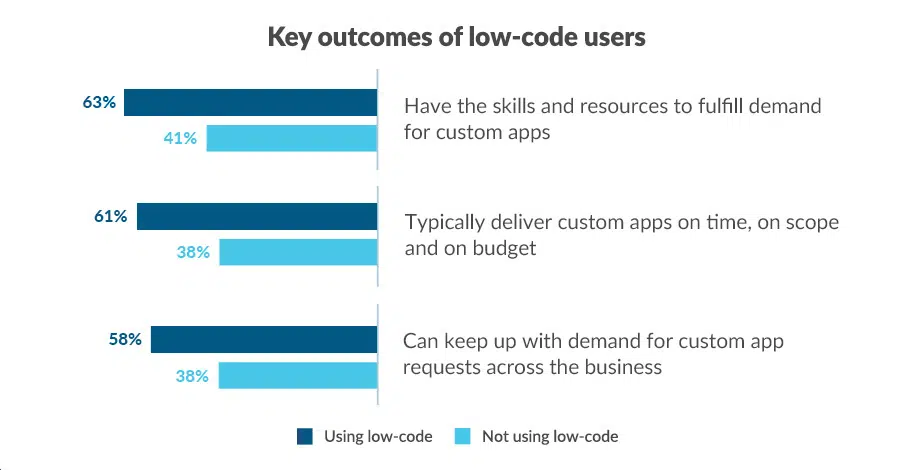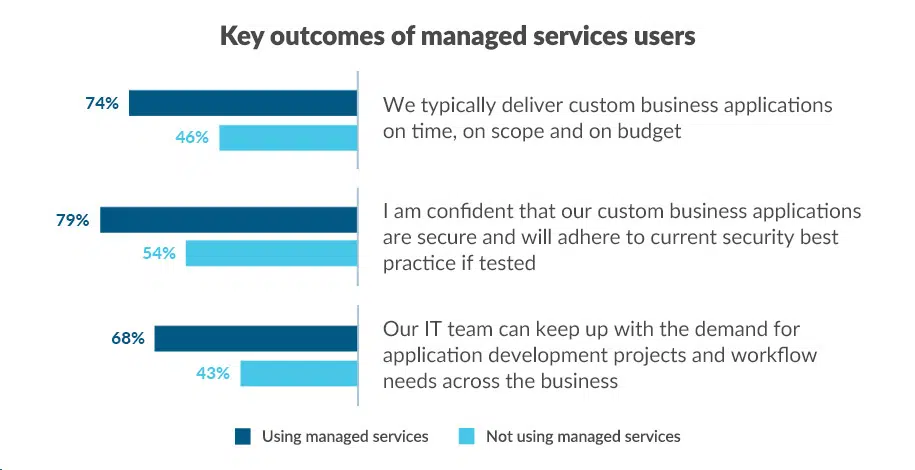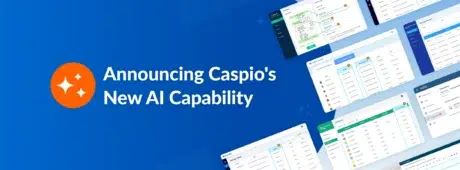Low Code: The Business Transformation Game-Changer
February 6, 2020

Do you struggle meeting application development demand in your company?
In collaboration with digital transformation consulting leader StarCIO, we polled 268 IT decision-makers on their priorities, challenges and opportunities surrounding the development and support of custom business applications.
We found that over 90% of respondents consider custom applications as a strategic enabler for their business. Yet, almost 80% reported having insufficient resources to deliver these critical apps.
So how do you cope with the lack of IT resources in an age of growing demand for custom software applications?
Download the Low Code: The Business Transformation Game-Changer report and discover how forward-thinking business leaders are using low-code platforms to bridge the expanding IT skills gap.
What Drives Organizations to Build Custom Software?

We asked why respondents build custom apps and two focal areas emerged as top answers: optimizing customer experiences (65%) and optimizing internal workflows (65%).
Many of our customers have been driven by similar motivations.
Acoustic doppler manufacturer SonTek, whose instruments help predict flooding, looked to low-code to alleviate their customer service woes. Inundated with service request calls, they built an application that enabled customers to check the status of their repairs through the company website — improving not just their internal workflow, but also their customer experience.
“Since using the Caspio platform, calls for repair status have gone down over 50%.”
Jeff Winters
Director of Customer Service
SonTek
GEFCO UK, a global logistics provider and the European leader in automotive logistics, had struggled with the swift processing of invoices. Using Caspio, they built an online database solution that reduced invoicing time from 13 weeks to two weeks — accelerating the collection of millions of dollars with increased efficiency, while also lowering employee costs.
Beyond customer service and workflows, the motivations of companies for building software change depending on their size.
Large organizations also prioritize upgrading legacy operations and enhancing data access to support decision-making. Meanwhile, small and medium businesses consider improving products/services as a major driver.
Challenges to Building and Supporting Custom Apps
We uncovered three major hurdles in the way of custom app development and support in 2020.
-
Application development budgets are scarce – An overwhelming 81% of respondents have minimal to no budget for app development and ongoing support. Only 13% said they have a substantial budget across the enterprise while 6% said they have enough funding, but only within their department.
-
Delivery is saddled with roadblocks – Lack of IT talent emerged as the greatest hindrance to delivering custom software. Respondents also cited lack of budget, integration with legacy systems and speed of delivery as other top concerns.
-
Lack of internal confidence – Nearly 60% of organizations lack confidence in their overall capability to deliver custom applications. Only 46% agree that their IT teams can keep up with the demand. That’s a sizable gap between business needs and the IT department’s ability to deliver.
Download the full report to learn more about the barriers that companies face in building and supporting custom business applications.
Low-Code Adopters Report More Success
The most striking takeaway from our research is the difference in key outcomes reported by respondents that leverage low-code development platforms.
Respondents that use low-code are more likely to deliver applications on time, scope and budget. They are more likely to have resources to fulfill the demand for custom applications.

StarCIO president Isaac Sacolick, who authored the study, suggests that employees with the technical acumen and interest to get more involved in the software development process can help with application delivery by building the apps themselves using low-code platforms.
“Our marketing department used low-code platforms to build ad tracking applications, while our finance and operations teams transformed spreadsheets into online databases and managed workflows,” Sacolick shares.
When business professionals are empowered to self-build the applications they need, more applications will be created without taxing IT teams.
Managed Services Augments IT Skills Gap
Another key finding in our research is the high success rate reported by businesses that adopt some form of managed application services.

While they are a minority at less than one-third of respondents, adopters of managed services expressed greater confidence in delivering custom software on time, scope and budget. They are more likely to have the skills and resources to meet the demand for apps.
This respondent group also posted the highest level of confidence in having applications that are secure and will adhere to security best practices if tested.
Sacolick says leveraging managed services gives organizations access to necessary technical expertise, especially for security testing, which requires up-to-date knowledge and technologies.
Create Custom Applications 10-20x Faster in 2020
We thank all IT decision-makers who participated in this research, and StarCIO for helping us consolidate the data and glean meaningful insights.
In summary, today’s companies believe custom applications are a strategic business enabler, but they face numerous challenges in delivering and supporting them. Lack of IT talent and lack of funding are their biggest hurdles. Forward-thinking business leaders look to low-code platforms and managed services to address these challenges.
We hope our findings and recommendations empower you to meet custom application demand and help your business thrive in today’s competitive landscape.
Download your complimentary copy now.
Want to learn more about low-code and managed application services? Request a free consultation and see how Caspio can help you achieve development and business goals despite scarce IT resources.















